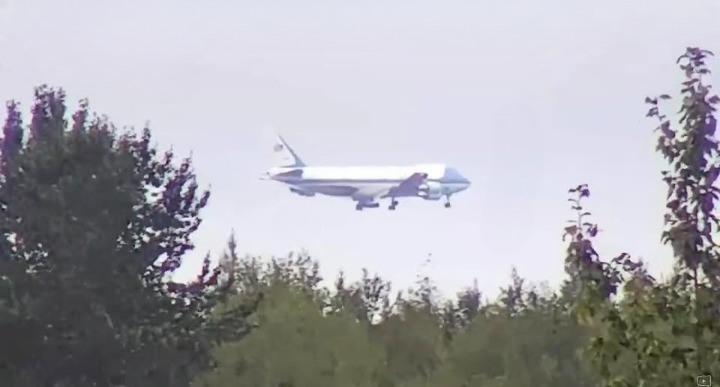Trump and Putin Meet in Alaska: A Landmark Moment in Modern Diplomacy

On a clear and brisk Alaskan morning, the world’s attention turned to Anchorage, where a meeting unlike any other was about to unfold. Former U.S. President Donald Trump and Russian President Vladimir Putin arrived for a highly anticipated diplomatic summit at Joint Base Elmendorf-Richardson. The occasion drew an international audience, not just for its political significance but also for the potential impact it might have on ongoing global challenges.
This meeting is more than a simple exchange between two leaders—it’s a symbol of the complex, often delicate nature of international diplomacy in the 21st century. With cameras capturing every arrival, handshake, and expression, the event immediately became one of the most closely followed political moments of the year.
The Arrival in Anchorage
Shortly after sunrise, Air Force One touched down on the runway, its arrival marked by the hum of engines and the flashing of cameras from both local and international press. Former President Trump descended the steps, waving to onlookers before being greeted by senior officials and military personnel. Just minutes later, President Putin’s aircraft arrived under equally watchful eyes, marking the first time in years that the two leaders had stood face-to-face on U.S. soil.
Security at the base was at its highest, with Secret Service agents, U.S. military personnel, and Russian security teams coordinating to ensure the safety of both leaders. Local roads were closed, airspace was tightly controlled, and residents of Anchorage watched as their city briefly became the epicenter of global politics.
Why Alaska? The Strategic Significance
Many observers have asked: Why choose Alaska for such a high-profile meeting? The location is not only geographically convenient—situated between the continental United States and Russia—but also carries symbolic weight. Alaska was once part of the Russian Empire before being sold to the United States in 1867, a historical connection that adds another layer of meaning to today’s events.
Additionally, Alaska’s positioning near the Arctic has become increasingly relevant in modern geopolitics. Climate change, resource exploration, and maritime navigation rights in the Arctic region are now part of a growing conversation between nations. Meeting in Alaska sends a subtle signal that the Arctic’s strategic and environmental issues could be part of broader diplomatic discussions.
The Purpose of the Summit
Although official agendas have been kept intentionally vague, sources close to the talks indicate that the primary focus is on exploring peaceful solutions to ongoing international disputes. The situation in Eastern Europe—particularly Ukraine—remains a top priority for the international community. While Ukraine’s leadership was not directly represented at the summit, both leaders have expressed their intention to eventually involve all relevant parties in the dialogue.